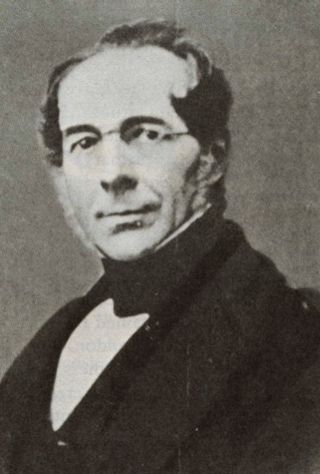William Rutter Dawes
British astronomer (1799–1868) From Wikipedia, the free encyclopedia
William Rutter Dawes (19 March 1799 – 15 February 1868) was an English astronomer.
William Rutter Dawes | |
|---|---|
 A photograph, c. 1863 | |
| Born | 19 March 1799 |
| Died | 15 February 1868 (aged 68) |
| Citizenship | English |
| Awards | Gold Medal of the Royal Astronomical Society (1855) |
| Scientific career | |
| Fields | Astronomy |
Biography
Dawes was born at Christ's Hospital[1] then in the City of London (it moved to Horsham, West Sussex in 1902),[2] the son of William Dawes, also an astronomer, and Judith Rutter.[3] He qualified as a doctor in 1825. On 29 October 1828 he was ordained pastor at an Independent chapel in Burscough Street, Ormskirk, Lancashire,[4] formerly part of a silk factory.[4] A new chapel, in Chapel Street, was opened in 1834.[4] Dawes resigned as pastor in December 1837 due to ill health.[4] When, in 1843, the chapel got into financial difficulties due to the debt owing after its construction, Dawes came to their aid.[4]
Astronomy

Dawes made extensive measurements of double stars as well as observations of planets. He was a friend of William Lassell. He was nicknamed "eagle eyed".[5] He set up his private observatory at his home, Hopefield House, built 1856-7[6] in Haddenham, Buckinghamshire. One of his telescopes, an eight-inch (200mm) aperture refractor by Cooke, survives at the Cambridge Observatory, now part of the Institute of Astronomy where it is known as the Thorrowgood Telescope.[7]

He made extensive drawings of Mars during its 1864 opposition. In 1867, Richard Anthony Proctor made a map of Mars based on these drawings. Proctor named two features after Dawes.[8]
He was elected a Fellow of the Royal Astronomical Society in 1830 and a Fellow of the Royal Society in 1865, for his astronomical work.[9] Proposers for his Royal Society Fellowship included G B Airy and J F W Herschel.[9]
Awards
He won the Gold Medal of the Royal Astronomical Society in 1855.[10]
Legacy
Dawes[11] craters on the Moon and Dawes[12] crater on Mars are named after him, as is a gap within Saturn's C Ring,[13] formerly labelled 1.495 RS.[14]
An optical phenomenon, the Dawes limit, is named after him.
Family
Dawes married twice. His first wife was Mary Scott née Egerton (1764-1840). They married on 13 January 1824 at Haddenham, Buckinghamshire.[15] She was the widow of his tutor, Thomas Scott.[16] On 28 July 1842 Dawes married Ann Welsby née Coupland (1805-1860).[16] She was the widow of Ormskirk solicitor John Welsby (1800-1839)[16] whom she had married on 16 January 1824.[17]
Selected writings
- Dawes, William Rutter (1849). The Stars in Six Maps, on the Gnomonic Projection. C. Knight. Bibcode:1849ssmg.book.....D.
References
Further reading
External links
Wikiwand - on
Seamless Wikipedia browsing. On steroids.

